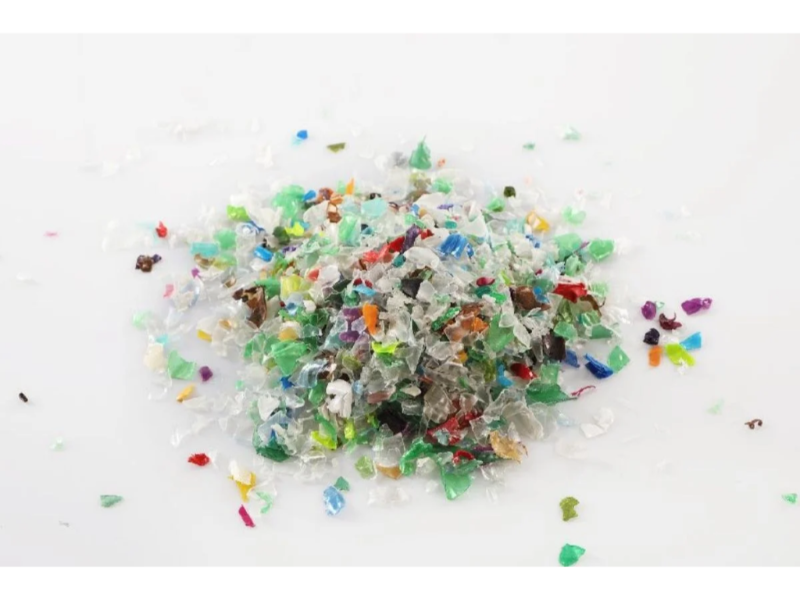Recycling not only reduces waste, but also contributes to the protection of natural resources. “Post-Consumer Recycled (PCR) plastics”, which stand out among recycled plastics, are one of the basic building blocks of sustainable production. The use of these materials is gaining importance day by day in terms of reducing plastic pollution and contributing to the circular economy.
PCR plastic, which is obtained from post-consumer waste, draws attention both with its environmentally friendly structure and its versatile usage areas in the industry. So what exactly is PCR plastic? Through which processes can it be reused? Why does it play such a critical role in today’s and future production approach?
In this article, we will discuss recycled plastic in detail, explain the differences between PCR plastic and PIR plastic, and examine how this transformation journey turns into an opportunity for a more livable world.
Table of Contents
- What is PCR Plastic?
- What Does Post-Consumer Recycled (PCR) Mean?
- Recycled Plastic Raw Material
- PCR Plastic Production
- PCR Plastic and Environmental Impact
- Difference between PCR and PIR
- PCR Plastic Uses
- BURKASAN’s PCR Solutions
- Conclusion
- Frequently Asked Questions (FAQ)
What is PCR Plastic?
PCR plastic, in English Post-Consumer Recycled plastic, is an environmentally friendly raw material obtained by collecting and recycling plastics that become waste after being used by the consumer. Plastic bottles, food packaging, cleaning product containers and many similar plastic products that we frequently encounter in daily life become waste after use. However, instead of going to the garbage, these wastes are separated and reprocessed in special recycling facilities.
The PCR plastic obtained as a result of this process is used as raw material in the production sector and utilized in the production of new products. Thus, the environmental damage caused by plastic waste is reduced and the depletion of natural resources is slowed down. This approach, which also contributes to reducing the carbon footprint, offers a great advantage for brands that want to achieve their sustainability goals.
The use of recycled plastics has become not only a choice but also a social responsibility in today’s environmentally conscious world. PCR plastic offers an effective solution to fulfill this responsibility.

What does Post-Consumer Recycled (PCR) mean?
Post-Consumer Recycled (PCR) describes the process of recycling materials that become waste after consumer use. In this process, plastics that have been used and discarded by individuals or businesses – for example water bottles, food packaging, cleaning product containers – are collected through specialized collection systems. This waste is then washed, sorted and processed so that it can be used again in production processes.
The most important feature of PCR materials is that they are derived directly from post-consumer waste. This distinguishes them from PIR (Post-Industrial Recycled) materials, which are recycled from production surplus or waste. The use of PCR not only reduces the amount of waste, but also significantly reduces the need for fossil fuels such as petroleum, which are required for the production of new plastics.
Today, many industries aim to minimize their environmental impact, reduce their carbon footprint and adopt a more sustainable production model by using PCR raw materials. This approach, which provides both environmental and economic benefits, is one of the cornerstones of the circular economy.
Recycled Plastic Raw Material
Recycled plastic raw material is an environmentally friendly material obtained by reusing both post-industrial and post-consumer plastic waste through certain processes. In this process, waste plastics are first sorted by type, then washed to remove dirt, labels and organic residues. The cleaned plastics are then crushed, melted and usually transformed into granules (pellets) to become raw materials to be included in production processes.

These recycled raw materials are used in a wide range of industries, from packaging to automotive, textiles to white goods. These granules are used in many applications such as plastic injection molding, film production, and bottle production.
They play an important role in the creation of new products.
One of the biggest advantages of this method is that it reduces dependence on natural resources. It also recycles plastics that would otherwise end up in the environment as waste. At the same time, it helps reduce carbon emissions. This contributes to the development of a sustainable production model.
PCR Plastic Production
PCR (Post-Consumer Recycled) plastic production is a multi-stage recycling process that supports environmental sustainability. This process enables post-consumer plastic waste to be recycled back into production. It makes significant contributions to both the environment and the economy at every step.
The production process consists of the following basic stages:
- Collection:
In the first step, plastic waste from domestic and industrial sources is collected. This waste usually consists of products that are frequently used in daily life, such as plastic water bottles, detergent boxes and packaging materials. Collection is carried out by municipalities, private recycling companies or producer responsibility systems. - Sorting:
The collected plastics are separated according to their types. This step is of great importance as the physical and chemical properties of different types of plastics such as PET, HDPE, LDPE, PP are different from each other. Sorting can be done manually, with mechanical systems or optical separator technologies. - Cleaning:
The separated plastics undergo a thorough washing process to improve production quality. At this stage, dirt, oil, labels, ink and other foreign substances on the plastics are removed. The quality of cleaning directly affects the quality of the granules to be obtained. - Shredding and Granulation:
The cleaned plastics are broken into small pieces with the help of machines and then reshaped by melting at high temperature. As a result of this process, a new plastic raw material is obtained in granule (pellet) form. These granules are subjected to both visual and mechanical tests to ensure quality control. - New Production Process:
The PCR granules obtained are reused as raw materials in the production of packaging, pipes, automotive parts, textiles and various plastic products. In this way, waste plastics are brought back into the economy. This also reduces the use of natural resources.
PCR Plastic and Environmental Impact

Because the use of PCR plastic reduces pressure on the environment:
- Reduces the amount of waste
- Reduces the need for raw materials used in the production of new plastics
- Minimizes greenhouse gas emissions and energy consumption
In this way, it is aimed to reduce the carbon footprint. As a result, it becomes a method that protects the environment and supports development.
Difference between PCR and PIR
PCR (Post-Consumer Recycled) and PIR (Post-Industrial Recycled) are two important concepts frequently encountered in plastic recycling processes. They serve a similar purpose by promoting sustainability through recycling.
PCR plastic is a type of raw material obtained by recycling products used and discarded by consumers. These wastes consist of commonly used consumer products. Examples include water bottles, packaging materials, detergent containers, and similar items. They are typically thrown away after being used in households or commercial areas. Recycling such plastics is of great importance both in terms of waste management and environmental sustainability. It is also an effective solution in terms of reducing the carbon footprint.
PIR plastic, on the other hand, is obtained by recycling industrial waste. These wastes are generated during production, before they ever reach the consumer. For example, edge trimmings generated during injection molding are considered PIR materials. Plastics from overproduction or faulty prints also fall into this category.
In summary, the main difference between PCR and PIR is the source of the waste:
- PCR is derived from post-consumer plastics from domestic or commercial sources. Thanks to its direct impact on the environment, it stands out significantly. It is a more valuable option in terms of sustainability.
- PIR is derived from waste from the production process. This material is used to improve the efficiency of production processes and reduce waste.

Both types of recycling are important components of the circular economy. However, PCR provides a higher contribution in terms of reducing environmental impacts. PIR, on the other hand, offers a different kind of benefit. It helps optimize resource use in the production process. For this reason, many sustainability-oriented brands focus on responsible production. They prioritize the use of PCR content in their product packaging.
PCR Plastic Uses
PCR plastics are widely used in the following industries
- Packaging (especially food and cleaning products)
- Textile (recycled polyester)
- Automotive (interior trim parts)
- Construction (pipes, insulation materials)
- Electronics (device housings)
Thanks to this wide usage area, it contributes both economically and environmentally.
BURKASAN’s PCR Solutions
Burkasan is one of the leading companies in Turkey in PCR plastics. With 25 years of experience, it offers customized integrated waste management solutions for businesses. Acting with the principle of sustainability, Burkasan aims to make the recycling process efficient. In this way, it ensures that waste can be reused. PCR makes a difference in the sector with its high quality standards in material production.
Conclusion
Plastic recycled (PCR) is one of the most effective sustainability solutions to today’s environmental challenges. In a world where natural resources are limited, recycling plastic waste is of great importance. Putting these wastes back into production not only protects the environment. It also offers significant economic advantages.
The use of PCR plastics reduces fossil fuel consumption. At the same time, it reduces the amount of waste. However, it also contributes to minimizing the carbon footprint. Therefore, PCR raw materials hold significant importance. They are especially valuable for all manufacturers with a vision of sustainability. It has become an indispensable choice in terms of both ethical responsibility and competitive advantage. The use of PCR plastics is becoming increasingly widespread. They are used in packaging, automotive, textile, and many other sectors.
As a result, increasing the use of recycled plastics is important. It is not only an environmentally friendly approach. It is also one of the basic building blocks of conscious production. Every step to be taken in this area helps businesses fulfill their environmental responsibilities.
Frequently Asked Questions (FAQ)
What is PCR plastic?
PCR (Post-Consumer Recycled) plastic is obtained from products used by the consumer.
These products become waste after use. These products are recycled through various processes. The plastics obtained are made reusable.
How does PCR plastic contribute to the environment?
PCR plastic reduces the amount of waste. Limits the consumption of natural resources. Reduces greenhouse gas emissions. It also contributes to the prevention of plastic pollution.
What is the difference between PCR plastic and PIR plastic?
PCR is obtained from post-consumer waste. PIR (Post-Industrial Recycled), on the other hand, is produced from waste materials. These materials are generated during the production process. Source points are the main difference between these two types.
In which sectors is PCR plastic used?
PCR plastic is widely preferred in many sectors. These include packaging, automotive, textiles, construction, electronics, white goods and consumer products.
Can PCR plastic be recycled again?
Yes, PCR plastic products are recycled under appropriate conditions. In this way, it is brought back into the circular economy.
Is PCR plastic biodegradable?
No, PCR plastic is not. PCR plastic does not dissolve in nature like other types of plastic. However, since it is recycled, it can be reused without being mixed with nature.
What is the quality of PCR plastic?
Thanks to advanced recycling technologies, PCR plastics can now be produced in much higher quality. As a result, they reach a quality close to that of virgin plastics. They can also offer high performance.
Why do brands prefer to use PCR plastics?
These include a sense of environmental responsibility. There is also a desire to achieve sustainability goals. Additionally, companies aim to respond to growing consumer demands. In addition, compliance with legal regulations is an important factor. Strengthening brand reputation also supports this choice.

